| Listing 1 - 10 of 15 | << page >> |
Sort by
|
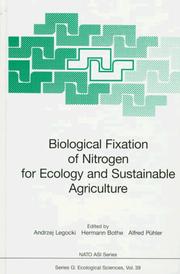
ISBN: 3540620567 3642638554 3642591124 Year: 1997 Volume: 39
Abstract | Keywords | Export | Availability | Bookmark
 Loading...
Loading...Choose an application
- Reference Manager
- EndNote
- RefWorks (Direct export to RefWorks)
Biological nitrogen fixation (BNF) - the conversion of molecular nitrogen into ammonia - is one of the most important reactions in ecology and agriculture. It is performed exclusively by microbes (prokaryotes) that live in symbiosis with plants. This book summarizes the latest research on this reaction, the participating microbes and the genetics of how their relevant genes could be transferred into the plants. In the light of a more sustainable and less ecologically damaging agriculture, this is becoming an increasingly pressing issue.
Nitrogen --- Nitrogen-fixing bacteria --- Rhizobium --- Fixation --- Congresses. --- Congresses --- Biochemistry. --- Plant ecology. --- Agriculture. --- Forestry. --- Biochemistry, general. --- Plant Ecology. --- Forest land --- Forest lands --- Forest planting --- Forest production --- Forest sciences --- Forestation --- Forested lands --- Forestland --- Forestlands --- Forestry --- Forestry industry --- Forestry sciences --- Land, Forest --- Lands, Forest --- Silviculture --- Sylviculture --- Woodlands --- Woods (Forests) --- Agriculture --- Natural resources --- Afforestation --- Arboriculture --- Logging --- Timber --- Tree crops --- Trees --- Farming --- Husbandry --- Industrial arts --- Life sciences --- Food supply --- Land use, Rural --- Botany --- Phytoecology --- Plants --- Vegetation ecology --- Ecology --- Biological chemistry --- Chemical composition of organisms --- Organisms --- Physiological chemistry --- Biology --- Chemistry --- Medical sciences --- Composition --- Floristic ecology --- Root nodule bacteria --- Rhizobiaceae
Book
ISBN: 9210163222 9789210163224 Year: 1997 Volume: 12 12 Publisher: New York (N.Y.): United Nations
Abstract | Keywords | Export | Availability | Bookmark
 Loading...
Loading...Choose an application
- Reference Manager
- EndNote
- RefWorks (Direct export to RefWorks)
Forests and forestry --- Forest products industry --- Charts, diagrams, etc. --- 630*905 --- -Forests and forestry --- -Forest land --- Forest lands --- Forest planting --- Forest production --- Forest sciences --- Forestation --- Forested lands --- Forestland --- Forestlands --- Forestry --- Forestry industry --- Forestry sciences --- Land, Forest --- Lands, Forest --- Silviculture --- Sylviculture --- Woodlands --- Woods (Forests) --- Agriculture --- Natural resources --- Afforestation --- Arboriculture --- Logging --- Timber --- Tree crops --- Trees --- Forest industries --- Wood products industry --- Wood-using industries --- Plant products industry --- Forest statistics and resources --- Charts, diagrams, etc --- -Forest statistics and resources --- 630*905 Forest statistics and resources --- -630*905 Forest statistics and resources --- Forest land --- Forests and forestry - Charts, diagrams, etc. --- Forest products industry - Charts, diagrams, etc.

ISBN: 0792337611 9401065020 9400900317 Year: 1997 Publisher: Dordrecht : Kluwer,
Abstract | Keywords | Export | Availability | Bookmark
 Loading...
Loading...Choose an application
- Reference Manager
- EndNote
- RefWorks (Direct export to RefWorks)
Fifteen years ago, approximately half the world population was estimated to live in continental and insular South-East Asia (Burma, Thailand, Kampuchea, Vietnam, Laos, Indonesia, Philippines). Then the region had a population growth of four million people every month, and the problem of malnutrition was acute for the rural population. International agricultural development organisations decided that their primary aim would be to double existing levels of agricultural production and, taking account of population growth, to double it again by the end of the century (Whyte 1976). Today, while global issues have greatly affected the parameters of the problem, the situation remains both serious and difficult. Despite impressive efforts in education and health, Indonesia for example, where population (179 millions) growth eased off only slightly between 1980 and 1990 (from 2. 3 percent to 1. 9 percent), is having to cope with increasing difficulties in managing natural resources and particularly its evanescent forest assets which, until 1986, were the second largest source of national revenue. Indonesia has the second largest surface area of tropical rain forests in the world (after Brazil) and thus all the problems linked with management and disappearance of those forests. The latest estimate gives a figure of 109 million hectares of forest in 1990, of which 40. 8 million hectares are production forests (Anon. -F AO 1990).
Physical geography --- Phytogeography --- Plant ecology --- Rain forest plants --- Ecology --- Indonesia --- Sumatra --- ecology --- forest types --- phytogeography --- rain forests --- Plant science. --- Botany. --- Forestry. --- Atmospheric sciences. --- Plant Sciences. --- Atmospheric Sciences. --- Atmospheric sciences --- Earth sciences --- Atmosphere --- Forest land --- Forest lands --- Forest planting --- Forest production --- Forest sciences --- Forestation --- Forested lands --- Forestland --- Forestlands --- Forestry --- Forestry industry --- Forestry sciences --- Land, Forest --- Lands, Forest --- Silviculture --- Sylviculture --- Woodlands --- Woods (Forests) --- Agriculture --- Natural resources --- Afforestation --- Arboriculture --- Logging --- Timber --- Tree crops --- Trees --- Botanical science --- Phytobiology --- Phytography --- Phytology --- Plant biology --- Plant science --- Biology --- Natural history --- Plants --- Floristic botany --- Botany --- Floristic ecology --- Phytoecology --- Vegetation ecology
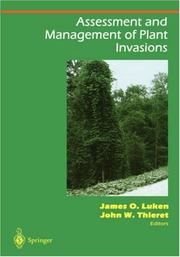
ISBN: 0387948090 1461273420 1461219264 Year: 1997 Publisher: New York (N.Y.) : Springer,
Abstract | Keywords | Export | Availability | Bookmark
 Loading...
Loading...Choose an application
- Reference Manager
- EndNote
- RefWorks (Direct export to RefWorks)
Biological invasion of native plant communities is a high-priority problem in the field of environmental management. Resource managers, biologists, and all those involved in plant communities must consider ecological interactions when assessing both the effects of plant invasion and the long-term effects of management. Sections of the book cover human perceptions of invading plants, assessment of ecological interactions, direct management, and regulation and advocacy. It also includes an appendix with descriptive data for many of the worst weeds.
ECO Ecology --- aliens --- aquatic plants --- biological control --- dispersal --- disturbance --- ecology --- global change --- indigenous plants --- management --- monitoring --- pest plants --- plant invasions --- plant removal --- restoration --- weeds --- Invasive plants --- Plant introduction. --- Plant invasions. --- Control. --- Ecology. --- Agriculture. --- Forestry. --- Plant science. --- Botany. --- Plant Sciences. --- Botanical science --- Phytobiology --- Phytography --- Phytology --- Plant biology --- Plant science --- Biology --- Natural history --- Plants --- Forest land --- Forest lands --- Forest planting --- Forest production --- Forest sciences --- Forestation --- Forested lands --- Forestland --- Forestlands --- Forestry --- Forestry industry --- Forestry sciences --- Land, Forest --- Lands, Forest --- Silviculture --- Sylviculture --- Woodlands --- Woods (Forests) --- Agriculture --- Natural resources --- Afforestation --- Arboriculture --- Logging --- Timber --- Tree crops --- Trees --- Farming --- Husbandry --- Industrial arts --- Life sciences --- Food supply --- Land use, Rural --- Floristic botany --- PLANT INVADERS --- PLANT INTRODUCTION --- NATURAL RESOURCE CONSERVATION --- CONTROL --- ECOLOGY
Book
ISBN: 0792346157 9401063109 9401154902 9780792346159 Year: 1997 Volume: 151 Publisher: Dordrecht ; Norwell, MA : Kluwer,
Abstract | Keywords | Export | Availability | Bookmark
 Loading...
Loading...Choose an application
- Reference Manager
- EndNote
- RefWorks (Direct export to RefWorks)
Botanists --- Botany --- Botanistes --- Botanique --- Correspondence --- History --- Sources --- Correspondance --- Histoire --- Chaix, Dominique --- Villars, Dominique --- Bontanists --- Correspondence. --- Sources. --- -Botany --- -Botanical science --- Phytobiology --- Phytography --- Phytology --- Plant biology --- Plant science --- Biology --- Natural history --- Plants --- -Sources --- -Villars, Dominique --- -Correspondence --- HIS History & Biographies --- history of botany --- correspondence --- botanists --- France --- 18th century --- Botanical science --- Plant biologists --- Plant scientists --- Biologists --- Plant specialists --- History&delete& --- History. --- Plant systematics. --- Plant taxonomy. --- Forestry. --- History of Science. --- History, general. --- Plant Systematics/Taxonomy/Biogeography. --- Forest land --- Forest lands --- Forest planting --- Forest production --- Forest sciences --- Forestation --- Forested lands --- Forestland --- Forestlands --- Forestry --- Forestry industry --- Forestry sciences --- Land, Forest --- Lands, Forest --- Silviculture --- Sylviculture --- Woodlands --- Woods (Forests) --- Agriculture --- Natural resources --- Afforestation --- Arboriculture --- Logging --- Timber --- Tree crops --- Trees --- Botanical classification --- Botanical systematics --- Botanical taxonomy --- Classification --- Plant biosystematics --- Plant classification --- Plant systematics --- Plant taxonomy --- Systematic botany --- Systematics (Botany) --- Taxonomy, Plant --- Plant taxonomists --- Annals --- Auxiliary sciences of history --- Floristic botany --- Phytologists --- Villars, Dominique, --- Bontanists - France - Correspondence. --- Botany - France - History - 18th century - Sources. --- Chaix (dominique)
Periodical
ISSN: 20073828 20074018 Year: 1997 Publisher: Chapingo, México : Universidad Autónoma Chapingo
Abstract | Keywords | Export | Availability | Bookmark
 Loading...
Loading...Choose an application
- Reference Manager
- EndNote
- RefWorks (Direct export to RefWorks)
Forests and forestry --- Agroforestry --- Ecology --- Forêts et sylviculture --- Agroforesterie --- Ecologie --- Periodicals --- Periodicals. --- Périodiques --- Agroforestry. --- Ecology. --- Forests and forestry. --- Mexico. --- forest environments --- biodiversity --- ecological impact --- natural resources --- conservation of ecosystems --- Forest land --- Forest lands --- Forest planting --- Forest production --- Forest sciences --- Forestation --- Forested lands --- Forestland --- Forestlands --- Forestry --- Forestry industry --- Forestry sciences --- Land, Forest --- Lands, Forest --- Silviculture --- Sylviculture --- Woodlands --- Woods (Forests) --- Agriculture --- Natural resources --- Afforestation --- Arboriculture --- Logging --- Timber --- Tree crops --- Trees --- Balance of nature --- Biology --- Bionomics --- Ecological processes --- Ecological science --- Ecological sciences --- Environment --- Environmental biology --- Oecology --- Environmental sciences --- Population biology --- Agro-forestry --- Anáhuac --- Estados Unidos Mexicanos --- Méjico --- Meḳsiḳe --- Meksiko --- Meksyk --- Messico --- Mexique --- República Mexicana --- Stany Zjednoczone Meksyku --- United Mexican States --- United States of Mexico --- Maxico --- Mekishiko
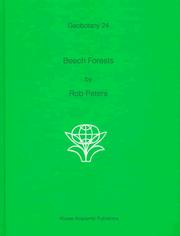
ISBN: 0792344855 9048148243 9401587949 Year: 1997 Publisher: Dordrecht : Kluwer Academic Publishers,
Abstract | Keywords | Export | Availability | Bookmark
 Loading...
Loading...Choose an application
- Reference Manager
- EndNote
- RefWorks (Direct export to RefWorks)
Fagus --- Fagus sylvatica --- Distribution géographique --- Geographical distribution --- Provenance --- Facteur lié au site --- site factors --- forests --- Aménagement forestier --- Forest management --- Couverture végétale --- Plant cover --- Taux de croissance --- Growth rate --- Asie --- Asia --- Amérique du Nord --- North America --- Europe --- forestry --- forest ecology --- Fagaceae --- Eastern Asia --- Plant ecology. --- Trees. --- Forestry management. --- Forestry. --- Plant science. --- Botany. --- Plant Ecology. --- Tree Biology. --- Forestry Management. --- Plant Sciences. --- Botanical science --- Phytobiology --- Phytography --- Phytology --- Plant biology --- Plant science --- Biology --- Natural history --- Plants --- Forest land --- Forest lands --- Forest planting --- Forest production --- Forest sciences --- Forestation --- Forested lands --- Forestland --- Forestlands --- Forestry --- Forestry industry --- Forestry sciences --- Land, Forest --- Lands, Forest --- Silviculture --- Sylviculture --- Woodlands --- Woods (Forests) --- Agriculture --- Natural resources --- Afforestation --- Arboriculture --- Logging --- Timber --- Tree crops --- Trees --- Forest administration --- Forest plants --- Forest resource administration --- Forest resource management --- Forest stewardship --- Forest vegetation management --- Forestry management --- Forests and forestry --- Stewardship, Forest --- Vegetation management, Forest --- Ecosystem management --- Dendrology --- Nursery stock --- Woody plants --- Botany --- Phytoecology --- Vegetation ecology --- Ecology --- Management --- Administration --- Control --- Floristic botany --- Floristic ecology
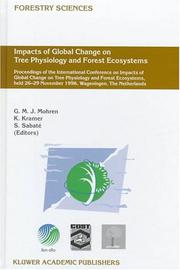
ISBN: 0792349210 904814986X 9401589496 Year: 1997 Publisher: Dordrecht Kluwer Academic Publishers
Abstract | Keywords | Export | Availability | Bookmark
 Loading...
Loading...Choose an application
- Reference Manager
- EndNote
- RefWorks (Direct export to RefWorks)
These proceedings fonn the outcome of an International Conference on "Impacts of Global change on Tree Physiology and Forest Ecosystems ", held from 26-29 November 1996, at Wageningen, The Netherlands. The conference brought together biologists, ecologists, and forest scientist working in the field of impacts of elevated CO and air pollution on tree physiology and forest ecosystems, and marked the 2 completion of a European COST action on "Impacts of Elevated C02 levels and Air Pollutants on Tree Physiology" (ICAT / COST-614), as well as the conclusion of the frrst phase of an EU-funded project entitled "Long-Term Effects of C02 and Climate Change on European Forests (LTEEF) ", that was carried out under the Environment and Climate Programme of the 4th Framework Programme (contract no's EV5V-CT94-0468 and PECOINIS-CT94-0112). The conference aimed to present an overview of current knowledge of effects of air pollution and climate change, at the biophysical, biochemical and physiological level of trees, against the background of climatic conditions and natural stresses. For the proceedings, we have asked the authors to provide an overview of their recent work, providing an entrance to a particular field of research rather than presenting unpublished material. The meeting took place at the International Agricultural Centre (lAC) with fmancial support provided by the COST-614 secretariat in Brussels. We like to thank mrs. A. van der Bunte of lAC for her support in organising the meeting, mr. A. J. H.
forests --- Écologie forestière --- forest ecology --- Changement climatique --- Climatic change --- Pollution atmosphérique --- air pollution --- Impact sur l'environnement --- Environmental impact --- Dioxyde de carbone --- carbon dioxide --- Choc thermique --- Heat shock --- Physiologie végétale --- Plant physiology --- Sol de forêt --- Forest soils --- Modèle --- Models --- Mesure --- Measurement --- Système d'information géographique --- Geographical information systems --- Europe --- Air --- Climatic changes --- Forest ecology --- Global environmental change --- Trees --- Environmental Sciences and Forestry. Forestry --- Pollution --- Environmental aspects --- Congresses. --- Effect of air pollution on --- Physiology --- Wounds and injuries --- Forest Ecology --- Forest Ecology. --- Plant ecology. Plant sociology --- Forestry --- Forestry. --- Trees. --- Ecotoxicology. --- Ecology . --- Tree Biology. --- Ecology. --- Balance of nature --- Biology --- Bionomics --- Ecological processes --- Ecological science --- Ecological sciences --- Environment --- Environmental biology --- Oecology --- Environmental sciences --- Population biology --- Ecotoxicology --- Pollutants --- Environmental health --- Toxicology --- Dendrology --- Nursery stock --- Woody plants --- Arboriculture --- Forests and forestry --- Timber --- Forest land --- Forest lands --- Forest planting --- Forest production --- Forest sciences --- Forestation --- Forested lands --- Forestland --- Forestlands --- Forestry industry --- Forestry sciences --- Land, Forest --- Lands, Forest --- Silviculture --- Sylviculture --- Woodlands --- Woods (Forests) --- Agriculture --- Natural resources --- Afforestation --- Logging --- Tree crops --- Ecology
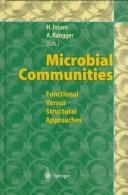
ISBN: 3540624058 3642645119 3642606946 Year: 1997 Publisher: Berlin : Springer,
Abstract | Keywords | Export | Availability | Bookmark
 Loading...
Loading...Choose an application
- Reference Manager
- EndNote
- RefWorks (Direct export to RefWorks)
Research on decomposer communities of terrestrial ecosystems for a long time has focussed on microbial biomass and gross turnover parameters. Recently, more and more attempts are made to look beyond the biomass, and more specifically determine functions and populations on a smaller scale-in time and space. A multitude of techniques is being improved and developed. Garland and Mills (1991) triggered a series of publications on substrate utilization tests in the field of microbial ecology. Despite several promising results for different applications in different laboratories, many problems concerning the assay and the interpretation of results became evident. After individual discussions on the approach with colleagues from various laboratories we started to plan a workshop on the matter. The response on our first circular was extraordinary, and instead of a small workshop it became a meeting with almost 150 participants. The meeting was named 'Substrate use for characterization of microbial communities in terrestrial ecosystems' (SUBMECO) and was held in Innsbruck, Austria, from Oct. 16-18, 1996. The very focussed scope attracted enthusiastic advocates of the approach, and also serious critics. Some of the topics concerned improvements of current inoculation and incubation techniques, ranging from sample pre-treatment, inoculum density and incubation temperature to statistical data handling. New methods for calculating microbial diversity were proposed, as well as bootstrap methods that allow statistics with many variables on a relatively low number of replicates.
Microbiologie --- Microbiology --- Micro-organisme --- microorganisms --- Propriété des micro-organismes --- Microbial properties --- Biodégradation --- Biodegradation --- Écologie microbienne --- microbial ecology --- Biologie du sol --- Soil biology --- Pollution du sol --- Soil pollution --- Détoxification --- Detoxification --- Fertilité du sol --- soil fertility --- Fermentation --- Soil microbial ecology --- Environmental Sciences and Forestry. Soil Science --- Research --- Methodology. --- Soil Biology --- Soil Biology. --- Biodegradation. --- Detoxification. --- Microbiology. --- Ecology . --- Agriculture. --- Forestry. --- Ecology. --- Forest land --- Forest lands --- Forest planting --- Forest production --- Forest sciences --- Forestation --- Forested lands --- Forestland --- Forestlands --- Forestry --- Forestry industry --- Forestry sciences --- Land, Forest --- Lands, Forest --- Silviculture --- Sylviculture --- Woodlands --- Woods (Forests) --- Agriculture --- Natural resources --- Afforestation --- Arboriculture --- Logging --- Timber --- Tree crops --- Trees --- Farming --- Husbandry --- Industrial arts --- Life sciences --- Food supply --- Land use, Rural --- Balance of nature --- Biology --- Bionomics --- Ecological processes --- Ecological science --- Ecological sciences --- Environment --- Environmental biology --- Oecology --- Environmental sciences --- Population biology --- Microbial biology --- Microorganisms --- Ecology --- Microbial ecology --- Research. --- Environmental microbiology --- Soil ecology
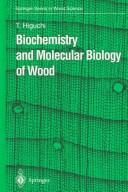
ISBN: 3540613676 3642644198 3642604692 Year: 1997 Publisher: Berlin : Springer,
Abstract | Keywords | Export | Availability | Bookmark
 Loading...
Loading...Choose an application
- Reference Manager
- EndNote
- RefWorks (Direct export to RefWorks)
Progress in wood chemistry has been related mainly to chemical wood pulping and bleaching and chemical utilization of wood and wood extractives. Meth ods of wood analysis were developed by Schorger (proximate analysis in 1917) and Dore (summative analysis in 1919), and standard methods based on Schorger's method, e.g., TAPPI standards (Technical Association of the Pulp and Paper Industry), have been widely used for chemical analysis of woods in many countries. Thus it is generally known that wood is composed of about 50% cellulose, 20-35% of lignin, 15-25% of hemicelluloses, and variable amounts of extractives. Chemical characterization and efficient utilization of these wood components have been studied in laboratories of wood chemistry and technology in universities and government institutions. In the last decade, biochemistry and molecular biology of microorganisms, animals, and plants have greatly progressed. At the same time wood has been recognized as a unique renewable ecomaterial produced by trees using solar energy. In addition, many desirable properties of wood and wood components as biomaterial that affects physiology and psychology in humans have recently attracted attention.
Plant molecular biology. --- Wood --- Anatomy. --- Chemistry. --- Biochemistry. --- Agriculture. --- Forestry. --- Biotechnology. --- Cell biology. --- Plant science. --- Botany. --- Biochemistry, general. --- Cell Biology. --- Plant Sciences. --- Botanical science --- Phytobiology --- Phytography --- Phytology --- Plant biology --- Plant science --- Biology --- Natural history --- Plants --- Cell biology --- Cellular biology --- Cells --- Chemical engineering --- Genetic engineering --- Forest land --- Forest lands --- Forest planting --- Forest production --- Forest sciences --- Forestation --- Forested lands --- Forestland --- Forestlands --- Forestry --- Forestry industry --- Forestry sciences --- Land, Forest --- Lands, Forest --- Silviculture --- Sylviculture --- Woodlands --- Woods (Forests) --- Agriculture --- Natural resources --- Afforestation --- Arboriculture --- Logging --- Timber --- Tree crops --- Trees --- Farming --- Husbandry --- Industrial arts --- Life sciences --- Food supply --- Land use, Rural --- Biological chemistry --- Chemical composition of organisms --- Organisms --- Physiological chemistry --- Chemistry --- Medical sciences --- Composition --- Floristic botany --- Plant anatomy --- Molecular phytobiology --- Phytobiology, Molecular --- Botany --- Molecular biology --- Agricultural chemistry --- Botanical chemistry --- Cellulose --- Chemistry, Technical --- Lignin --- Wood distillation --- Figure --- Analysis --- WOOD --- WOOD ANATOMY --- WOODY PLANTS --- GENOMES --- PROTEIN SYNTHESIS --- GENE EXPRESSION --- BIOCHEMISTRY --- MOLECULAR BIOLOGY --- METABOLISM --- BIOSYNTHESIS --- BIOLOGICAL DEVELOPMENT
| Listing 1 - 10 of 15 | << page >> |
Sort by
|

 Search
Search Feedback
Feedback About
About Help
Help News
News